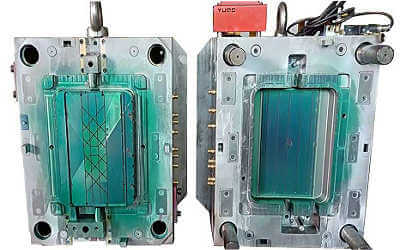Injection Molding 101: A Comprehensive Guide to the Basics of Injection Molding
Injection molding is a widely used manufacturing process that plays a crucial role in producing a vast array of products we use in our daily lives. From automotive components to consumer goods, injection molding offers cost-effective production with excellent design flexibility. In this article, we will delve into the fundamentals of injection molding, exploring the process, materials, design considerations, quality control, advantages, limitations, and future trends.
I. Introduction to Injection Molding
Injection molding is a manufacturing technique that involves injecting molten material into a mold cavity, allowing it to cool and solidify, resulting in the desired shape. This process offers high precision and repeatability, making it suitable for mass production.
II. The Injection Molding Process
The injection molding process comprises several steps, each crucial to achieving a successful outcome. Firstly, the mold design and preparation are undertaken, considering factors such as part complexity and material flow. Next, material selection is vital, as it determines the properties and characteristics of the final product. The chosen material is then melted and injected into the mold, after which it undergoes cooling and solidification. Finally, the mold is opened, and the product is ejected.
III. Materials Used in Injection Molding
Injection molding employs a variety of materials, with thermoplastics and thermosetting plastics being the most common. Thermoplastics, such as polypropylene and ABS, are known for their ability to be melted and re-melted without significant degradation. On the other hand, thermosetting plastics, like epoxy and phenolic resins, undergo irreversible chemical reactions during curing, resulting in heat-resistant and durable products.
IV. Design Considerations for Injection Molding
Designing for injection molding requires careful consideration of various factors to ensure optimal results. Part design guidelines, including wall thickness, draft angles, ribs, fillets, gates, and ejector systems, play a crucial role in moldability and preventing defects. Additionally, mold design considerations such as parting line, gate location, cooling system, venting, and ejection system must be addressed to facilitate efficient production.
V. Quality Control in Injection Molding
Ensuring high-quality products is paramount in injection molding. Common defects, such as sink marks, warpage, flash, short shots, and burn marks, can be addressed through troubleshooting techniques. Inspection and testing methods, including dimensional accuracy checks, visual inspection, and material testing, are employed to maintain strict quality standards.
VI. Advantages and Limitations of Injection Molding
Injection molding offers numerous advantages, making it a preferred manufacturing method. Its cost efficiency, high production rates, design flexibility, and a wide range of material choices contribute to its popularity. However, injection molding does have limitations, including high initial tooling costs, design constraints, and material limitations, which must be considered during the product development stage.
VII. Future Trends in Injection Molding
The injection molding industry is continually evolving, embracing advanced technologies and innovations. Additive manufacturing and 3D printing are increasingly integrated into injection molding processes, allowing for rapid prototyping and complex geometries. Smart injection molding, incorporating sensors and automation, enhances process control and efficiency. Additionally, sustainable materials and processes are gaining traction, aiming to reduce environmental impact.
VIII. Conclusion
Injection molding serves as a backbone of modern manufacturing, enabling the production of a wide range of products efficiently and cost-effectively. By understanding the fundamentals of injection molding, including the process steps, material selection, design considerations, quality control, and its advantages and limitations, manufacturers can make informed decisions and optimize their production processes. As technology continues to advance, the future of injection molding holds exciting possibilities, paving the way for even more innovative and sustainable manufacturing practices

Recent Comments